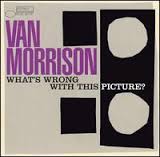63474 / Daten zuletzt bearbeitet von: SJO allgemein
This URL: https://jazzdaten.ch/de/album.php?Album=63474
This URL: https://jazzdaten.ch/de/album.php?Album=63474
CD: Morrison Van — What's Wrong With This Picture

Label: Blue Note
Label-Nummer: 93651 2
Label-Nummer: 93651 2
Aufnahmedatum: 2003
Land: IE
Aufnahmeort: Dublin
Tonträger: 1 CD
Liner Notes Verfasser: Thom Jurek
| Genre | ||
| Jazz | → | Pop-Soul |
While 2002's Down the Road was the best Van Morrison release in ages -- with its autobiographical allusions, cultural critiques, and new band -- it could not have prepared listeners for the jolt of this, his Blue Note Records debut What's Wrong With This Picture? While the album is hardly a straight jazz record, it does take the territory he explored on Down the Road another step further into the classic pop music of the 20th century filtered through his own Celtic swing, R&B, vocal jazz, and blue-eyed soul. The title track that opens the album is as close to an anthem as Morrison's ever written; he states with an easy, swinging, jazzy soul groove that he is not the same person he once was and wonders why that was so difficult for others to accept. There is no bitterness or bite in his assertions. If anything, the question is asked with warm humor and amusement as if it is indeed the listener's hangup if he/she can't accept Morrison "living in the present time." He asks, "Why don't we take it down and forget about it/'Cause that ain't me at all," as the song whispers to a close. Morrison's employment of a large horn section -- actually a pair of them as the disc was recorded in different sessions -- is full of teeth and big, bad soul. "Whinin Boy Moan" is a direct cue from Mose Allison as read by Big Joe Turner. Hard-swinging R&B horn lines (including his own alto saxophone) combine with killer solos by tenorman Martin Winning and trumpet boss Matt Holland as Morrison does his most inspired blues shouting since Wavelength. Celtic soul is never far behind, either, as it displays itself on the stunningly beautiful "Evening in June." The way Morrison employs brass, woodwind, and reed textures is unique for him as clarinets, alto and bass, flügelhorns, and loads of saxophones gradually build as the emotion in a tune imparts itself. Acker Bilk makes a return appearance here co-writing and performing on the elegant, bluesy swing of "Somerset." Other than this collaboration and stellar covers of "St James Infirmary" and Lightnin' Hopkins' "Stop Drinking" -- the most unique and timely interpretation of the nugget since Louis Armstrong's, and it contains the greatest horn solo interplay on any Morrison record ever -- Morrison's songwriting is more expansive, more intricate, and more luxuriant in its use of grooves, vamps, and riffs as they intertwine with beautiful horn charts, sophisticated melodies ,and the always-present blues feel. There are 13 tracks here, and virtually all of them would be standouts on any of his other records. But the aforementioned tracks, along with "Meaning of Loneliness" and "Once in a Blue Moon," are among the finest tunes he's ever written, let alone recorded. This is the sound of an artist who is comfortable making a break with his past because it is not a break; he understands it as the next part of a continuum that goes deeper and wider than anyone else ever expected. This is the sound of self-assurance as it articulates itself with grace and aplomb.
